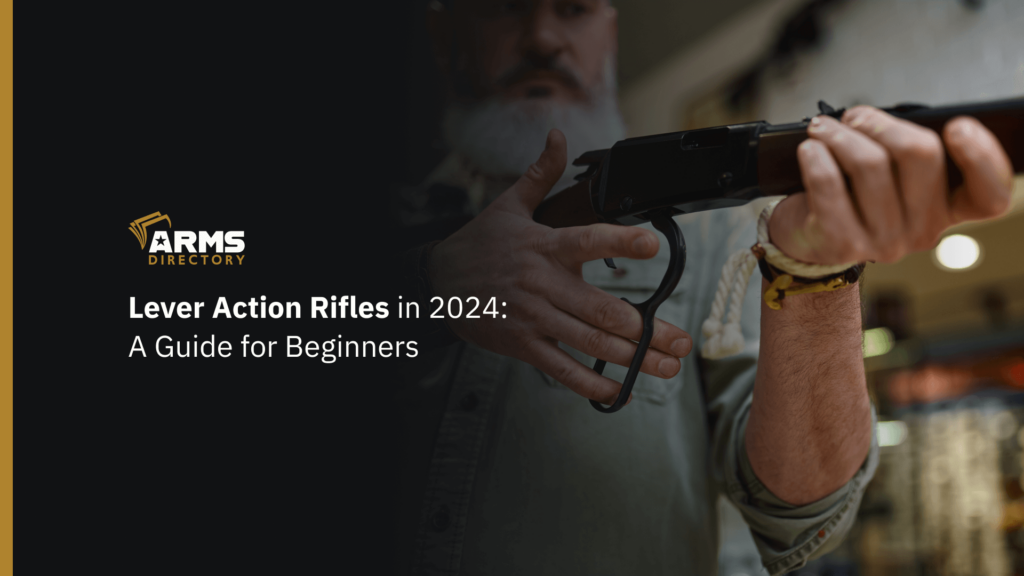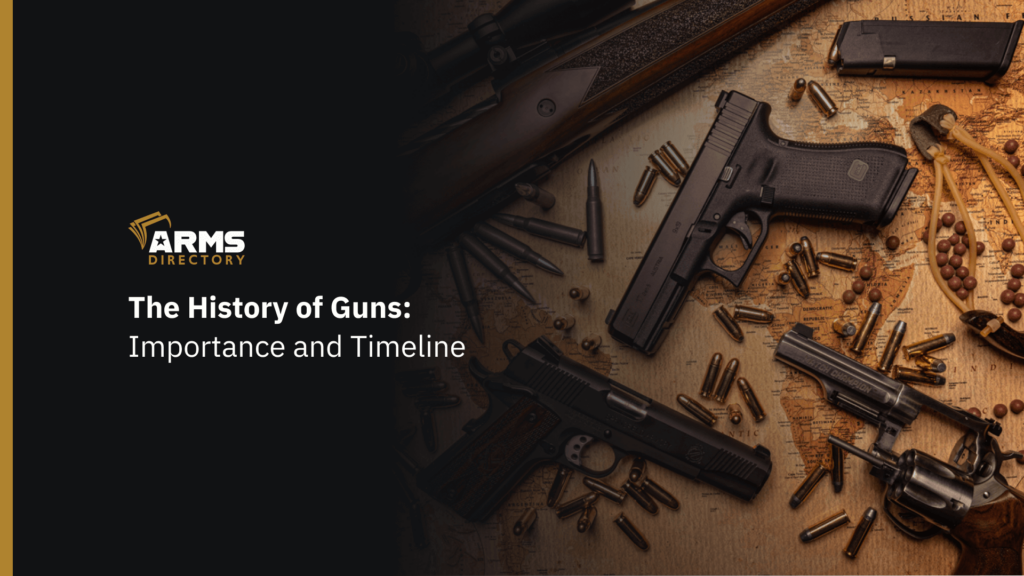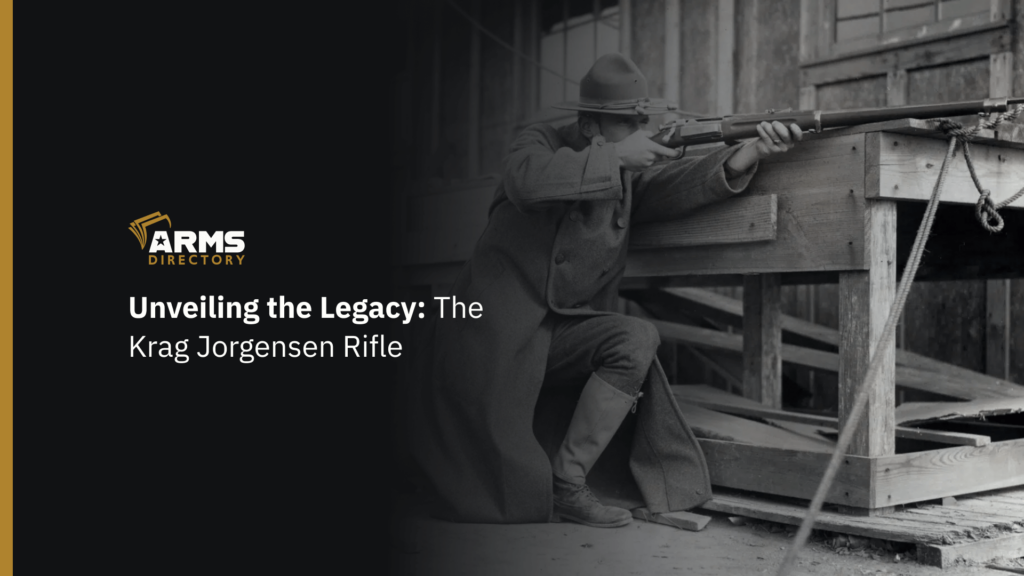
Unveiling the Legacy: The Krag Jorgensen Rifle
Greetings, fellow firearms enthusiasts! Today’s story starts in Norway, around 1886, when two Norwegians designed a gun, named the Krag Jorgensen rifle.
Perhaps the biggest contributing factor towards the popularity of this firearm, was its adoption in the US Army in 1892.
Read on to discover all about the history, significance, and variations of the Krag.
Related Post: Lever Action Rifles in 2024: A Guide for Beginners – Arms Directory
Origins of the Krag Jorgensen Rifle
The Krag Jorgensen is a repeating bolt-action rifle created in the late 19th century (1885-1889) by Norwegian firearms designers Ole Herman Johannes Krag, and Erik Jorgensen.
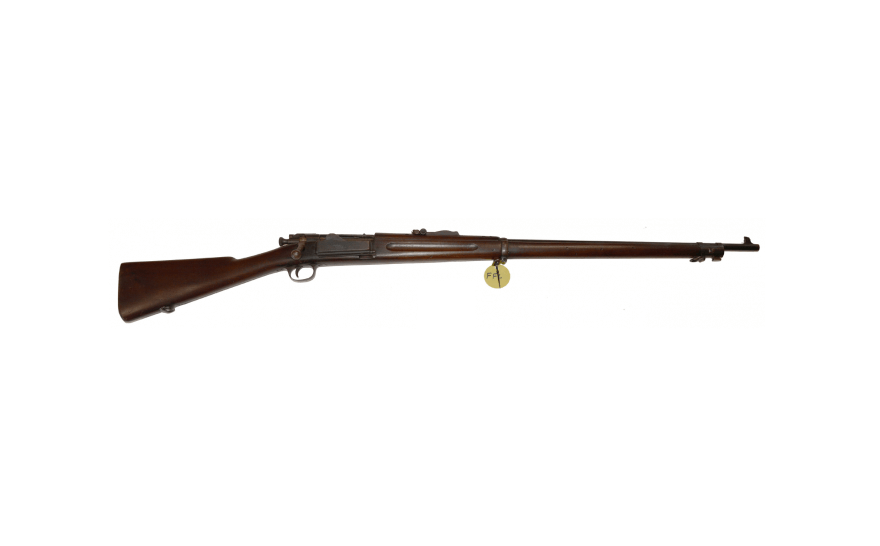
The Krag rifle, as it became known, quickly became a success, as in 1892 they were chosen to be the new United States Military rifle. To be more precise, the Krag was selected from 53 rifle designs, beating such manufacturers as Mauser, Lee, and Mannlicher to name a few.
The U.S. Army’s new .30-40 Krag-Jorgensen service rifle’s first major combat use was during the Spanish-American War of 1898. The rifle had a very smooth bolt-action, hosting a rather unorthodox five-round magazine on the right side of the receiver.
Unlike conventional magazines which stuck straight down, the Krag used an innovative capsule magazine, wrapping itself around the bolt-action. In fact, its magazine is cited as one of the main reasons why the Krag was chosen.
Interesting fact: Did you know that over 1 million various Krag rifles were produced worldwide? 500,000 were produced in the United States, in the Springfield Armory between 1894 and 1904.
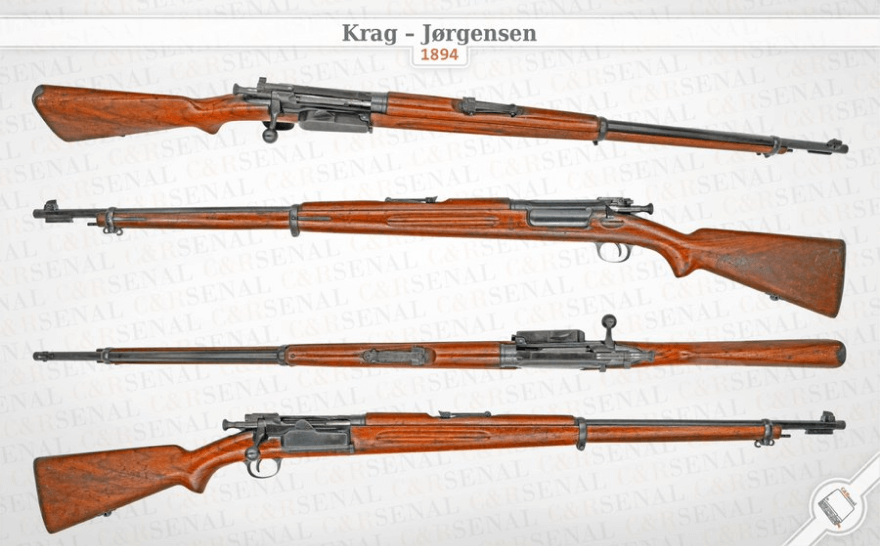
Krag Jorgensen Rifle: Variations
American Krag Jorgensen Rifles
- The Springfield M1892 Rifle. The US Krag rifle production started in 1894 with the Springfield M1892 rifle. The Springfield “Krag” featured a 30″ barrel and a cutoff magazine that could operate in an upwards position. They also had a cleaning rod fitting under the barrel. In case you are wondering, this firearm was supposed to come out in 1892, but got delayed to 1894, hence its name.
- The M1896 Rifle. An upgraded version of the M1892 rifle, the M1896, saw the cutoff magazine now operating in a downward position. Furthermore, the cleaning rod was situated in the butt trap housing. What is more, both production rate and accuracy were improved, due to a refined manufacturing technique.
- The M1898 Rifle. This design reverted back to the M1892’s magazine cut-off setup. The process of manufacturing here was further improved after a redesigned bolt handle recess and a modification of the rear sight.
- The M1898 Carbine, The M1899 Carbine, and The M1899 Constabulary Carbine. The M1898 Carbine had the same improvements as the M1898 Rifle, but used the shorter stock of the M1896 Carbine. The M1899 Carbine was practically the same as the M1898 Carbine, apart from the considerably longer forearm and hand guard on the stock, and the removal of the swivel ring. The M1899 Constabulary Carbine was built for the Philippines. The only major changes were the addition of a bayonet lug and full length stock.
Eventually, the Krag rifle proved to be ineffective to be used in service by the US Army, and could not compete with the designs of Mauser. It was only used for 12 years, as the military’s primary rifle, being replaced by the M1903 Springfield rifle in 1906.
Related Post: History of American Guns: From the Civil War to Vietnam
Norwegian Krag Jorgensen Rifles
- The M1894 Rifle. Also known as the Long Krag, this was the most popular version of the Krag Jorgensen. Over 150,000 examples were produced for both the Norwegian army and civilian use between 1894 and 1922.
- The M1895 Cavalry Carbine. This was basically a cut-down version of the M1894. It was produced alongside the M1897 Mounted Artillery and Engineer Carbines.
- The M1904 Engineer Carbine. An upgraded version of the previous carbines, the M1904 Engineer carbine can be identified by its full-length stock.
- The M1906 Guttekarabin (Boy’s Carbine). A more simple and shorter version of the M1895 Cavalry Carbine. As the name implies, it was meant to teach teenage boys to shoot. 300 examples of the Boy’s Carbine were produced in the new .22 Long Rifle ammunition.
- The M1912 Carbine. Also referred to as the Short rifle, the M1912 was produced to replace the M1894 Rifle, since the long-barreled rifle fell out of favor. The M1912 was further improved in 1916 and 1918, respectively named the M1912/16 and M1912/18. These subsequent models featured an improved nose band and a stronger action.
- The M1923 Sniper Rifle. Krag Jorgensen ventured into the sniper market for the first time between 1923 and 1926. The M1923, however, proved ineffective and unreliable in battle conditions.
- The M1925 Sniper Rifle. An enhanced M1923, the production of the M1925 lasted for 15 years until the German invasion of Norway in 1940.
- The M1930 Sniper Rifle. A significant development of the Krag Jorgensen Sniper rifle, the M1930, was produced from 1930 to 1939 with the action from the M1894 rifle. In 1950, it reentered production, using the improved M1912 action.
The M/1948 Elgrifle (moose rifle) (1948-1949), and the M/1951 Elgrifle (1950-1951) were the last Krag Jorgensen rifles in production.
Related Post: A Clear Shot: The Ultimate Guide to the Best Rifle Scopes
Final Words
The Krag Jorgensen definitely has its place in the history of US military service rifles. After all, it was chosen ahead of 53 other rifle designs in 1892 and did play its role in American history.
What are your thoughts about the Krag? Let us know in the comments below, and do not forget to check out our business directory.



